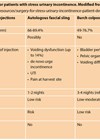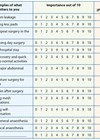Features
The surgical management of female stress urinary incontinence in a post-mesh era
Trends in surgical management of women with stress urinary incontinence (SUI) have changed in recent times, mainly due to the ‘High Vigilance Pause’ placed on the use of mesh for SUI (and prolapse) surgery in July 2018 following an independent...
OCERT: a new multi-specialty project to standardise robotic surgical training
Since its introduction by Dr William Osler in 1890 to the Board of Trustees at John Hopkins Hospital [1], the Halstedian ‘See one, do one, teach one’ has represented a guideline for surgeons worldwide, both for open and laparoscopic surgery,...
The Re-humanising Revolution: Breaking the conspiracy of silence
Over the last few years, the mental and emotional wellbeing of those who work in medicine has come under scrutiny. The author introduces a new resource. Working in healthcare has always been stressful but never more so than today. In...
A guided guide to the guide wire
The use of guide wires has become a core skill utilised by urologists, especially within the field of endourology. The authors take us through the development of the guide wire and their current use in urology. The history The first...
How an ergonomic design is helping women overcome barriers in ISC
Urinary incontinence, or loss of bladder control, is a frustrating problem for millions of people. Never knowing when and where one might have an accident can affect everything: from work to family and social life. It happens to both men...
Post-prostatectomy incontinence
Urinary incontinence following prostate surgery (post-prostatectomy incontinence or PPI) is a significant complication that can have a profoundly negative impact on the quality of life of patients suffering with it. It may become a barrier to physical activity and social...
COVID-19: the impact on urology so far
“How very little can be done under the spirit of fear.” Florence Nightingale Since 31 December 2019 when a cluster of pneumonia cases with an unknown cause were first referred to the WHO Country Office in China, there has been...
Intravesical GAG replacement therapies for bladder pain syndrome / interstitial cystitis – an update
The barrier function of the glycosaminoglycan (GAG) layer of the urothelium was identified by Parsons in 1975, and intravesical therapies to treat chronic inflammatory conditions of the bladder were developed soon after. However, the active role of the urothelium in...
The COVID-19 ‘frontlines’: a foundation doctor’s perspective
Staring through the fragmented stained glass of the Virgin Mary and her assorted angels, I reflected on the strangeness of the workplace I now found myself in and the irony of a workforce now working together more enthusiastically than ever...
Covid-19, cancer, and other calamities
The coronavirus (Covid-19) pandemic is upon us. The government and NHS are going full-steam ahead with their preparations for the onslaught, freeing up operating theatres, intensive care units, and even private hospital beds and staff, to accommodate the expected influx...
Benign prostatic hyperplasia: what are the benefits and harms of various surgical management options?
Benign prostatic hyperplasia (BPH) is characterised by stromal and epithelial prostatic cell hyperplasia. The enlarged prostate may be associated with voiding and storage lower urinary tract symptoms (LUTS). These have been predominantly attributed to bladder outlet obstruction (BOO), assumed to...
Patient decision aids in the management of stress urinary incontinence
Urinary incontinence is a common condition faced by up to 20-50% of women, which impairs quality of life and poses a significant socioeconomic burden to both the individual women involved and more widely to the NHS [1]. The overall cost...












